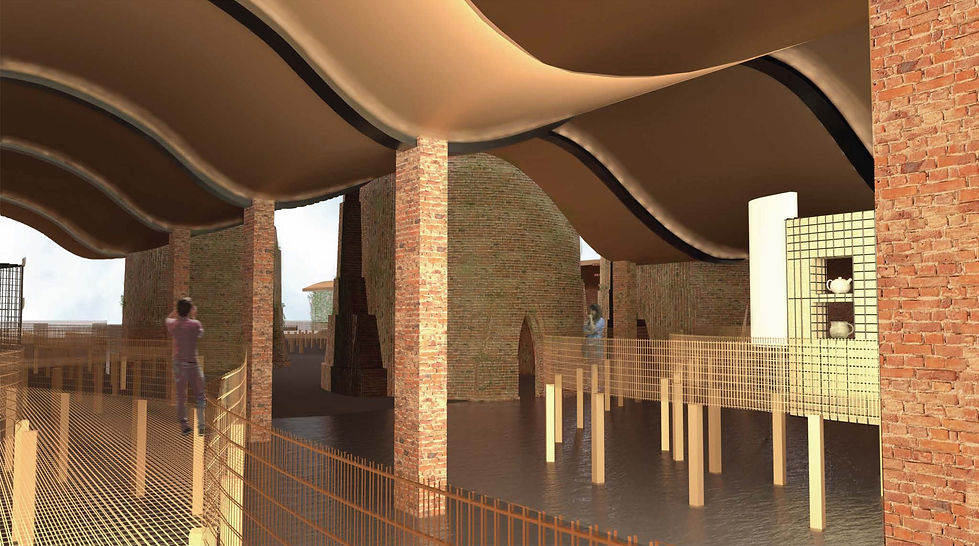Clay to Kiln: The Craft Of Mang Thit
Year 4 Semester 2
Materiality
Mang Thit is a riverside village in Vietnam’s Mekong Delta, known for its traditional brickmaking craft shaped by the region’s flooding cycles and rich alluvial soil. Once home to over 2,000 kilns, the village thrived on handmade brick production that defined its culture and economy. However, due to pollution from traditional firing methods and a shift toward sustainable materials, the industry has largely declined, leaving many kilns abandoned. Our studio explored how to address Mang Thit’s flooding and pollution challenges while preserving its architectural heritage. My partner and I designed a heritage center, Clay to Kiln: The Craft of Mang Thit, as a gateway to the historic village and an immersive space to experience its cultural legacy. The design’s spatial flow mirrors the circular rhythm of brickmaking and the movement of the Mekong River, with elevated pathways that adapt to tidal changes. Inspired by the organic form of the kilns, the reimagined warehouse roofs feature undulating, sculptural lines that harmonize with the landscape. Materials such as recycled bricks, copper, and steel gabions filled with rice husk bricks honor the site’s material history and sustainable reuse. Over time, the copper roof’s patina symbolizes nature’s reclaiming of human-made structures. The project celebrates coexistence, between people, craft, and environment, preserving Mang Thit’s past while reimagining a resilient future.
Click here to see more!










Software used: Rhino, VRAY for Rhino, Illustrator, Photoshop, Concepts drawing app on iPad